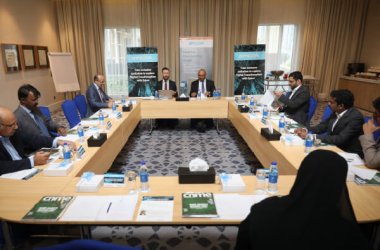 Oracle’s CIO and senior VP, Mark Sunday, has revealed how the company’s strategy to simplify its processes has enabled it to acquire and assimilate businesses.
Oracle’s CIO and senior VP, Mark Sunday, has revealed how the company’s strategy to simplify its processes has enabled it to acquire and assimilate businesses.
13 years ago, Oracle carried out a major business transformation project which involved simplifying, standardising and centralising its processes. The aim was to achieve operational excellence and efficiencies.
But Sunday believes it also enabled Oracle, which has acquired 86 companies over the last seven years, to become more agile.
“I believe that cleaning our house from 1998 to 2001 was not just the enabler to the transformation, we fundamentally couldn’t have done it without it. It’s made it so easy for us to acquire businesses. So when we acquire a company, it will just come in. You will be assimilated – resistance is futile,” Sunday said at the UK Oracle User Group (UKOUG) Conference in Birmingham during his opening keynote.
According to Sunday, Oracle reduced the number of ERP systems from more than 70, and consolidated 40 data centres to just two. In addition to which, it standardised by moving completely to a VoIP (Voice over IP) telephony environment, and centralised its financial division organisationally as well as geographically.
By standardising on global, single instances of systems in Austin, Texas – the company has a single instance of E-Business Suite, Siebel and business intelligence, for example – Sunday said that it led to shared service and self-service opportunities.
“We’ve self-serviced everything, including how I provide IT as a service,” he said.
This standardisation has led to “dramatic” savings. For example, despite the demand for bandwidth growing exponentially in recent years, Oracle has been able to keep its telecoms costs flat by standardising its telecommunications network – equal to more than a hundred million dollars in savings, according to Sunday.
Sunday used Oracle’s acquisition of Sun to illustrate the strategy. The company ripped out Sun’s existing infrastructure and replaced it with Oracle’s network and telecommunication standards. “We also closed sites and consolidated employees into existing Oracle sites,” he added.
As a software company, Oracle did have to make some changes when it acquired a hardware company like Sun. “But the concept of simplification remained. We reduced the number of Sun factories from 20 to five, and to reduce stock levels, we went from a build to stock process to assemble to order, Sunday pointed out.
With the legal integration of Sun in February 2010, Oracle then needed to integrate Sun-specific applications with Oracle. This involved expanding its existing ERP to include modules such as value chain management, product lifecycle management and supply chain business intelligence.
It achieved a return on investment in 12 months, which included a 64.2% reduction in excess inventory, a 16.7% reduction in product lead time and a 9.8% reduction in headcount, according to him.
In terms of current projects, Oracle revealed that it has implemented Fusion Apps – including customer relationship management (CRM), human capital management (HCM), an accounting hub and ERP – in an unnamed Oracle subsidiary.
The subsidiary is expected to go live on Fusion applications in 2012.





